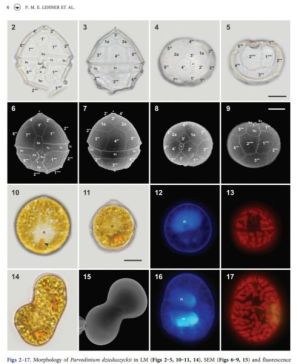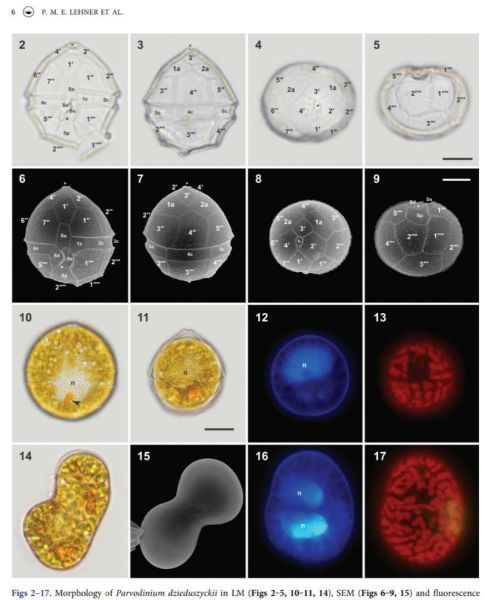The scientific periodical European Journal of Phycology has published another scientific study by Dr. Paweł M. Owsianny, head of the AMU Nadnotecki Institute in Piła, in collaboration with Prof. Marc Gottschling's team from Ludwig-Maximilians-Universität München, entitled "Dinoflagellates. ‘Linking new DNA sequence data to old scientific names of Parvodinium (Peridiniopsidaceae, Dinophyceae)’.
The article concerns Parvodinium, a genus of dinoflagellates in the Peridiniopsidaceae family, comprising relatively few but diverse species of dinoflagellates. The study, conducted by using light and scanning microscopy, extends our knowledge of the taxonomy, evolution and ecology of these microorganisms. The researchers obtained RNA genetic sequences (including 32 new entries in the GenBank database) that allowed a more detailed understanding of the affinities between Parvodinium species.
Based on DNA analysis, the species examined appeared to be closely related and represent a sister group to Parvodinium marciniakii - one of the species from the Tatra National Park previously discovered for science by Polish and German researchers. Analysis of morphology allowed their assignment to Parvodinium dzieduszyckii and Parvodinium lubieniense. Interestingly, the studied taxa Parvodinium dzieduszyckii and P. lubieniense were originally described in 1916 by a prominent Polish researcher, Prof. Jadwiga Wołoszyńska (1882-1951), from the vicinity of Lviv, Ukraine. The P. lubieniense specimens currently investigated, on the other hand, come from Lake Kuźniczek in the Kuźnik reserve in northern Greater Poland (on the border of Piła), and P. dzieduszyckii from the Teufelsseemoor Köpenick reserve in Berlin. The species are also new to both reserves.
The authors showed how species identification in this genus requires considering a unique combination of traits rather than a single morphological feature. The study is an essential step towards integrative taxonomy, combining morphology with genetic data, essential for metabarcoding studies, or the study of "DNA footprints," and the simultaneous diagnosis of multiple taxa in the same sample.




